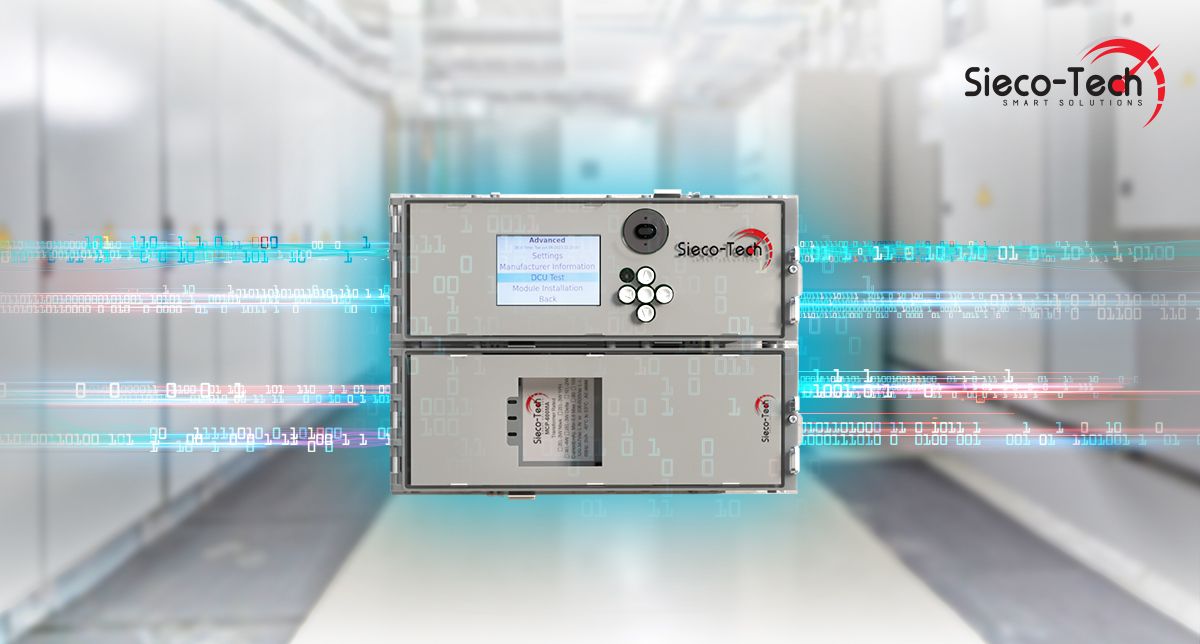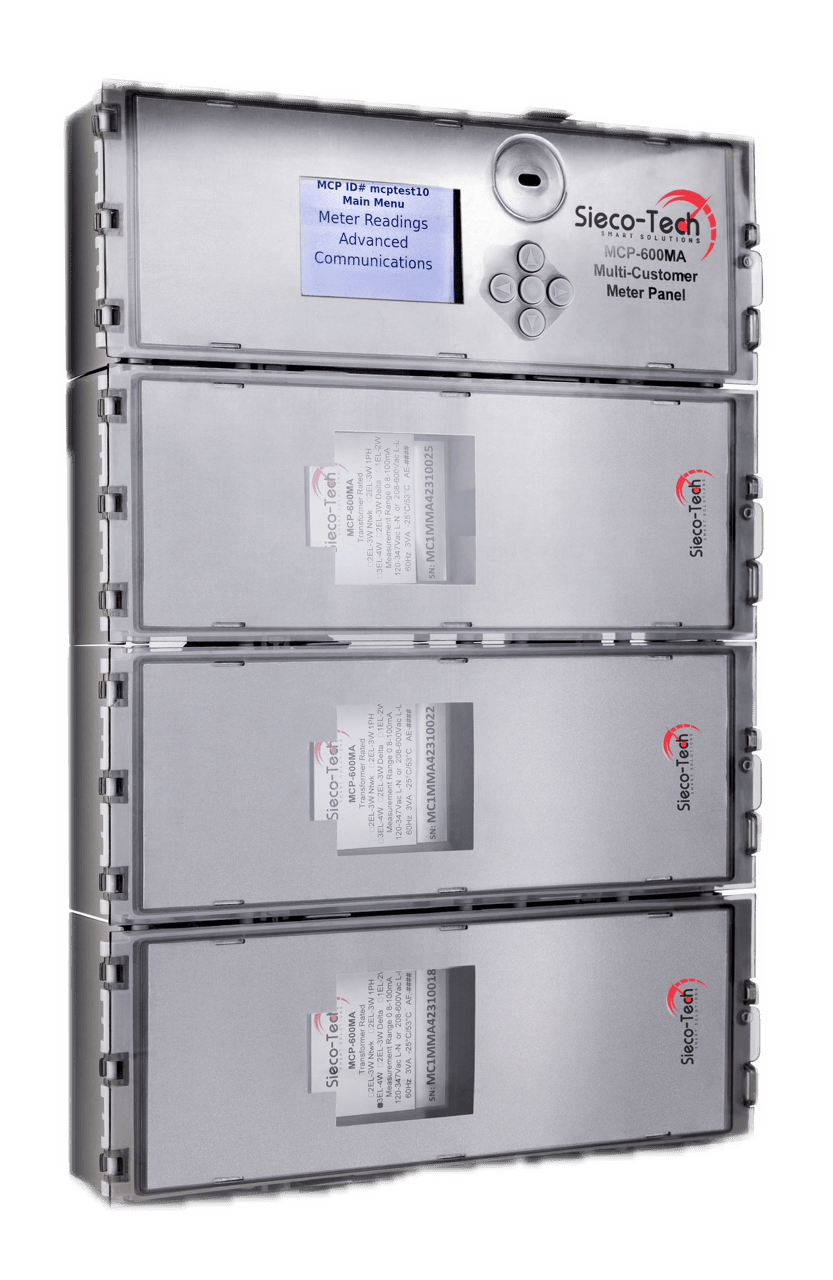
Avoid Costly AMI Meter Problems With IoT-Based Smart Energy Meters
Published on
Advanced metering infrastructure (AMI) meter problems can quickly sour sub-metering systems for you and your clients.
Deploying AMI electricity systems should feel like investing in tomorrow. Instead, it often feels more like locking down your operations into the past, fencing you and your customers inside a grid of technology that started turning obsolete the moment it was commissioned.
What’s more, these systems tie up your capital in properties for decades while markets, public policy, and regulations feel like they’re constantly shifting beneath your feet.
The hard truth is that many “AMI” electric meters can introduce just as many problems as they solve.
- Lack of future-ready features
- Inflexible communications
- Regulatory risk
The best, “advanced” electric sub-meters are those that can serve as building blocks within your grid no matter what your building management technology stack consists of or grows into.
Sieco-Tech Electric Smart Meters
All Sieco-Tech electric meters are engineered with open architecture, field-ready firmware upgrades, and flexible communications to support heterogeneous integrations.
Sieco-Tech is the preferred brand when a project needs hardware that can evolve instead of being replaced.
The Truth About “AMI” Electricity Meters
The issue of using “advanced manufacturing infrastructure” as a label for electric meters is that the term is so dated and broad it can be applied to sub-meters that only offer basic features by today’s standards.
AMI 1.0, which largely rolled out over two decades ago, supported fundamental features like automated meter reads, time-of-use billing, and basic outage detection.
AMI 2.0 was introduced in the 2010s and promised revolutionary features aiming to move beyond the meter-to-billing pipeline. But the 2.0 standards were never formally defined, and instead many sub-metering operators associate the term to represent endless change and upgrades.
The hard truth is that many “AMI” electric meters can introduce just as many problems as they solve.
What now exists is a range of meter technology that all fall somewhere within an ill-defined AMI spectrum. In short, the “AMI” energy meters you’re investing in could be based on decades-old technology that puts you at risk for problems tomorrow, such as:
- Future Feature Gaps — Electric sub-meter system can't easily be upgraded for new functionality, distancing you and your clients from new technology opportunities.
- Limited Scalability — Proprietary comms isolate electric sub-meter systems, making them unable to communicate with outside applications, such as EV charging platforms, billing service software, data warehouses and building automation systems (BAS).
- Regulatory Roadblocks — If devices can’t be easily updated or haven’t been designed to anticipate tightened regulations, policy shifts and evolving standards could leave you making costly updates in the field.
What Makes an Electric Meter Truly 'Advanced'?
To parse through the buzzwords of “AMI,” your procurement and decision-making process should be embedded in smart features, such as internet-of-things (IoT) interoperability, open metering system (OMS) communication protocols, and future readiness.
1. System-Agnostic Communication Protocols
The most frustrating AMI meter problems stem from closed, proprietary communication. If electric meters can't "speak" to other building systems, pursuing new technology opportunities constantly feels like fighting an uphill battle.
Advanced electric meters are engineered with open architecture and support industry-standard comms. Look for support of Modbus TCP/RTU, BACnet/IP, M-Bus, DLMS, RS-485 and modern IoT protocols like MQTT.
This flexibility enables integration with other property sub-metering infrastructure (water, thermal, gas meters) and enables you to create truly heterogeneous networks. It also means your electricity meters will support — not work against — your customers’ next building system integrations and technology venture.
2. Longevity with Future-Ready Architecture
Obsolescence is a concern for any investment in technology, and that concern should extend to electric sub-metering systems.
Many AMI energy meters are either outfitted with static systems or require on-site firmware updates. That means a simple shift in technology regulations or market demands could require you to carry out costly field operations or rip-and-replace projects.
Future-ready architecture insulates your systems from becoming outdated and extends the lifespan and utility of your electric sub-meters.
Remote, Upgradeable DCUs
Addressing a security vulnerability or adding newly required features across the entire client portfolio of electricity would be a massive undertaking with most systems. However, advanced electricity meters now feature unsealed DCUs (Data Communication Units) that function like remotely accessible computers. This allows for fleet-wide firmware upgrades and software patches — securely, instantly, and without the need to physically touch or re-verify each meter.
Evolve with Modular Hardware
Truly advanced electric meters should act as a flexible platform that can be built on and adapted. These meters include modular components and expansion ports (like USB on the DCU) that allow new technologies to be added as needed.
For example, ZigBee is a foundational element for smart home systems and load control. While it’s not a common fixture for sub-metering right now, advanced electric metering systems designed with open architecture mean ZigBee can be added when or if it's needed.
3. Built-In Regulatory Agility
Any regulation update can threaten many legacy AMI meters with either uncertainty, costly re-verification, or even obsolescence.
Advanced electric meters are designed to make navigating regulations easier and less expensive during maintenance, inspections and scheduled re-verification projects.
Energy meters with advanced engineering design separate areas with metrology seals from non-regulated parts, making them easily serviceable without requiring regulatory re-verification.
Your sub-metering systems should also be built with capabilities that anticipate and equip you to respond to potential regulatory overhauls. There are two Measurement Canada specifications already on the horizon.
PS-E-18: No More Harmonics in Residential Electric Billing
The upcoming PS-E-18 standard will mandate residential electric sub-meters to only measure energy at the fundamental frequency (typically 60 Hz) to filter out harmonics, which can cause inaccurate billing.
PS-E-19: Data Integrity From Meter to Display
Data integrity within the electric metering system will be addressed in PS-E-19, requiring specific measures and logging to ensure data isn’t manipulated downstream between a DCU and display.

Sieco-Tech’s MCP Platform: The Electric Meter of The Future
The Sieco-Tech MCP platform for commercial and residential sub-metering systems is engineered to eliminate “AMI” meter problems and deliver truly advanced IoT Smart capabilities, which protect your ROI and equip you to better support your clients.
The secret of the MCP is its future-proof features, including a plug-and-play design, dedication to open protocols, modular architecture that grows and adapts to change, and does not drag your systems behind.
With Sieco-Tech's MCP, you're investing in IoT-based energy meters designed to support a property over a 30-year design life, as well as any innovations that may arise in between.
Unmatched Flexible Communications
The MCP's core design supports a broad range of open communication protocols (BACnet, Modbus, M-Bus, DLMS, RS-485, Pulse, MQTT) directly within its electric sub-meter architecture.
Revolutionary Architecture
The MCP features DCUs with upgradeable firmware and modular hardware that are upgradable in the field and include USB expansion ports for additional hardware. This allows for remote, fleet-wide updates and patches without ever breaking a Measurement Canada seal.
Future Regulation-Ready
The MCP platform accommodates and simplifies Measurement Canada compliance as well as the posture to adapt to new standards. MCP’s open architecture makes it PS-E-18-ready by pushing out a simple update, and its passive display logic and secure logging mean it already meets or exceeds potential PS-E-19 requirements.
Build for the Future: Partner with Sieco-Tech for Advanced Electric Metering
Sieco-Tech technology is built on practical and real innovation, not buzzwords. Our advanced IoT smart electric metering systems resolve common AMI meter problems, with functionality that never boxes in you or your clients.
Contact our product experts today to learn how Sieco-Tech's MCP platform can future-proof your electric sub-metering projects.
Frequently Asked Questions (FAQs)
What is an intelligent energy meter in IoT?
An IoT smart energy meter is an electric sub-meter with open networked communications and remote-upgrade capability that supports real-time usage and diagnostic data over open protocols like MQTT or LoRaWAN.
What is most important to a smart meter (IoT) device?
The three essentials of a smart meter (IoT) device are open-protocol interoperability (e.g., Modbus, BACnet), field-upgradeable firmware for new features, and an architecture that separates certified metrology from user interfaces for easy compliance.
What are the challenges of AMI?
Common AMI challenges include proprietary lock-in, static firmware, and regulatory updates that can trigger expensive re-verification or downtime.
What is an advanced electricity meter?
An advanced meter supports multiple open protocols, modular hardware slots, and over-the-air firmware updates, plus passive displays and harmonic filtering to meet evolving regulations.
What is the difference between a smart meter and an advanced meter?
AMI meters are sub-meters that offer a range of features from AMI 1.0 and AMI 2.0 concepts, fundamentally measuring usage and capable of remote reads. IoT smart energy meters offer advanced functionality, including open-protocol integration, modular expansions, and remote firmware upgradeability.
How do I know if I have an advanced meter?
Check for multiple open-protocol ports (e.g., Modbus, MQTT), a firmware-upgradeable DCU, modular expansion slots, and a sealed measurement core separated from user interfaces.
What is the architecture of advanced metering infrastructure?
It combines modular field meters with sealed metrology and unsealed DCUs, an open-protocol network layer and is capable of secure remote updates and analytics.